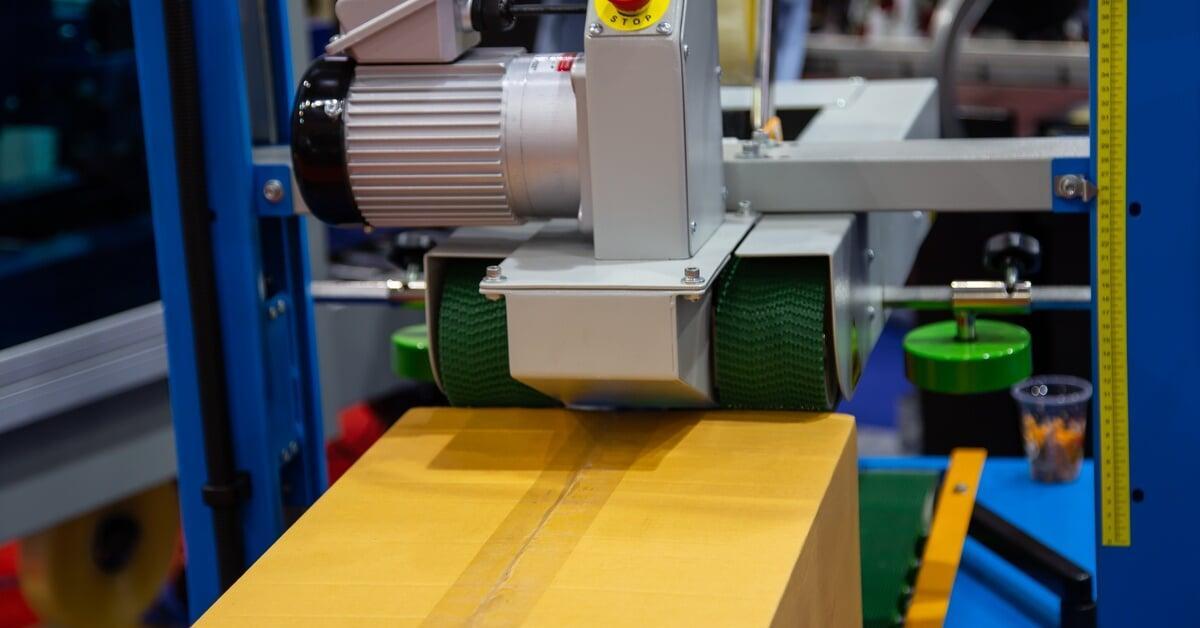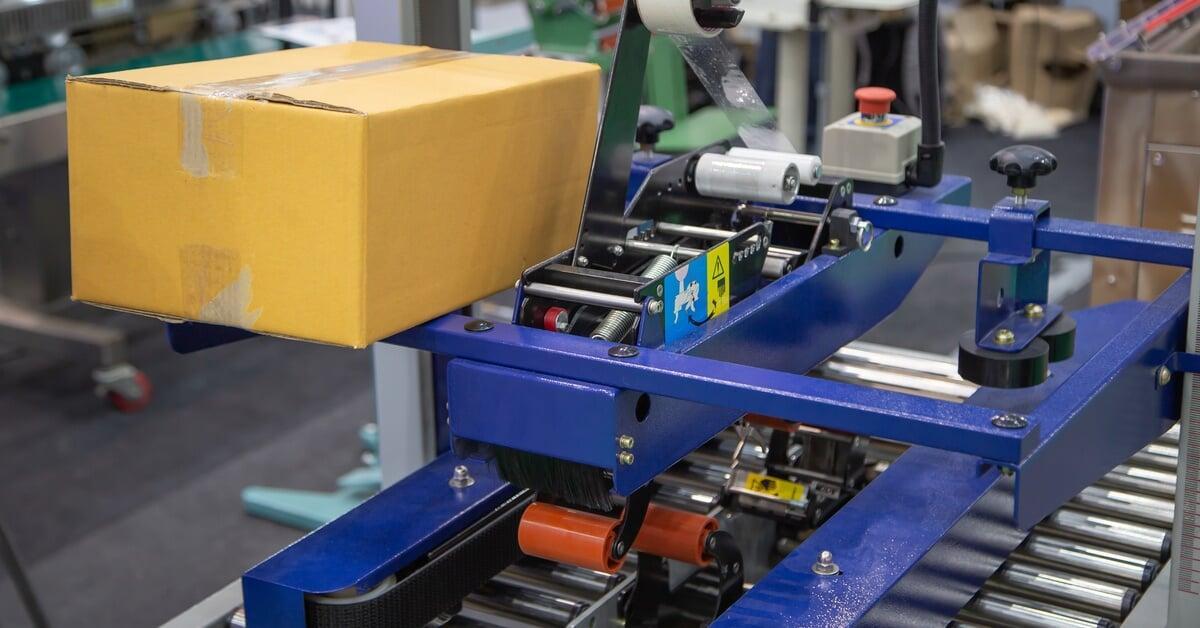
Packaging is a critical part of any business’s operations, especially those that deal with shipping and distribution. Whether you’re handling hundreds or thousands of products daily, improving packaging efficiency can directly impact costs, productivity, and customer satisfaction.
The case erector and case sealer are two essential machines designed to streamline the packaging process. However, their names alone can cause confusion about their roles. Are they overlapping tools, or are they entirely different? If you’re wondering which device best fits your business needs, this guide will clarify the differences between case erectors and case sealers.
What Is a Case Erector?
A case erector is a machine designed to automate the assembly of corrugated cardboard boxes. It simplifies a time-consuming task and ensures consistency in box assembly.
A case erector works by taking flat box sheets, folding them into shape, and securing the base, usually with tape or glue. These machines are available in various configurations, from semi-automatic to fully automatic. Semi-automatic models require some manual intervention, like loading the machine with cardboard blanks or initiating the folding process. Fully automatic models, on the other hand, are capable of running independently once set up, significantly reducing labor involvement.
Case erectors are ideal for businesses that deal with high-volume operations. They assemble all boxes with precision, consistency, and speed, ensuring accuracy and eliminating human error. This saves time and enhances the professional appearance of the final packaged product.
What Is a Case Sealer?
Once you have an assembled box, the next step is sealing it, and that’s where a case sealer comes in. Manual sealing, often done with hand-held tape guns or similar tools, can be inconsistent and inefficient. In contrast, case sealers deliver reliable, professional-quality closures every time.
Like case erectors, case sealers come in semi-automatic and fully automatic versions. Semi-automatic case sealers usually require an operator to feed the machine with pre-packed boxes. Automatic models can detect the incoming box, position it correctly, and apply the required seals without human intervention.
These machines are compatible with various sealing materials, including tape and adhesive, and can handle corrugated boxes of different sizes. The versatility of a case sealer makes it an ideal companion for industries ranging from e-commerce and retail to pharmaceuticals and food and beverage. A case sealer is a pivotal component of efficient packaging operations, particularly in facilities shipping out large quantities of products daily.

Key Differences Between Case Erectors and Sealers
Understanding the differences between case erectors and case sealers comes down to their roles in the packaging process. As mentioned, a case erector builds the boxes from flat-packed sheets, while a case sealer securely closes the packed boxes, preparing them for storage or delivery.
At the start of the packaging assembly line, case erectors create boxes for the products. By contrast, case sealers seal and prepare filled boxes for transit at the finishing stage. While both machines share the common objective of improving packaging efficiency, they address entirely different steps of the process.
Another notable difference lies in their impact on workflow. A case erector speeds up the initial stages, ensuring you have a constant supply of boxes for packaging. It eliminates the bottleneck that can occur when workers manually fold boxes one at a time. On the other hand, a case sealer makes sure that your packaging operation results in neatly and reliably sealed boxes. This is vital for protecting products during transport and maintaining a professional presentation to customers.
Benefits of Using Case Erectors
Case erectors are invaluable for streamlining workflows and reducing labor-intensive tasks. Automating the process of box assembly allows businesses to reallocate human resources to more complex operations, improving overall productivity. Case erectors offer consistency for growing businesses or those with batch production by precisely assembling every box to the required specifications.
Additionally, their efficiency minimizes waste by reducing errors caused by manual assembly, where damaged or improperly assembled boxes can result in unusable materials. Using a case erector also ensures scalability, allowing businesses to process increased orders without compromising on output quality or speed.
Benefits of Using Case Sealers
The primary advantage of a case sealer is its ability to provide secure, professional closures for every box. A properly sealed box guards your products against damage, tampering, or contamination during storage and shipment. Thus, investing in an automated sealing solution is critical to maintaining the safety and integrity of your products.
Another key benefit is how case sealers improve operational efficiency. They cut down the time spent sealing boxes manually, allowing you to process products faster and with greater accuracy. By automating this task, businesses can meet higher demand without unnecessary stress on labor resources.

The Right Solution for Your Business
Deciding whether your business needs a case erector, a case sealer, or both depends on your operational workflow, output volume, and packaging requirements. If box assembly is causing delays or consuming too much time and labor, a case erector will be an excellent investment. For businesses looking to enhance the quality and speed of their box-sealing processes, case sealers will add significant value.
That said, many businesses find that integrating both machines yields the greatest benefits. By automating both box assembly and sealing, you establish an efficient, end-to-end solution for your packaging process. This integrated approach minimizes errors, improves consistency, and maximizes throughput, ensuring that your products move from packaging to shipping seamlessly.
When choosing these machines, consider the specific needs of your packaging line. Think about factors like the size and material of your boxes, the sealing method you prefer (tape versus adhesive), and whether your operations require semi-automatic or fully automatic solutions. Ultimately, the right combination of equipment will depend on your production scale, goals, and budget.
Enhance Efficiency With Automated Packaging Solutions
Investing in case erectors and sealers isn’t just about upgrading your packaging equipment; it’s about creating a more efficient, reliable, and scalable process. Understanding the unique roles and benefits of these machines can help you optimize your operational workflow, making sure your business is prepared for growth and increasing customer satisfaction. If you’re evaluating options for automating your packaging line, consider the differences and benefits of both tools to ensure you’re making the best decision.
Check out PackSmart’s automatic and semi-automatic case formers to enhance your packaging operations. With our customizable and reliable equipment, you can increase production efficiency and reduce labor costs. Contact us today for pricing.
